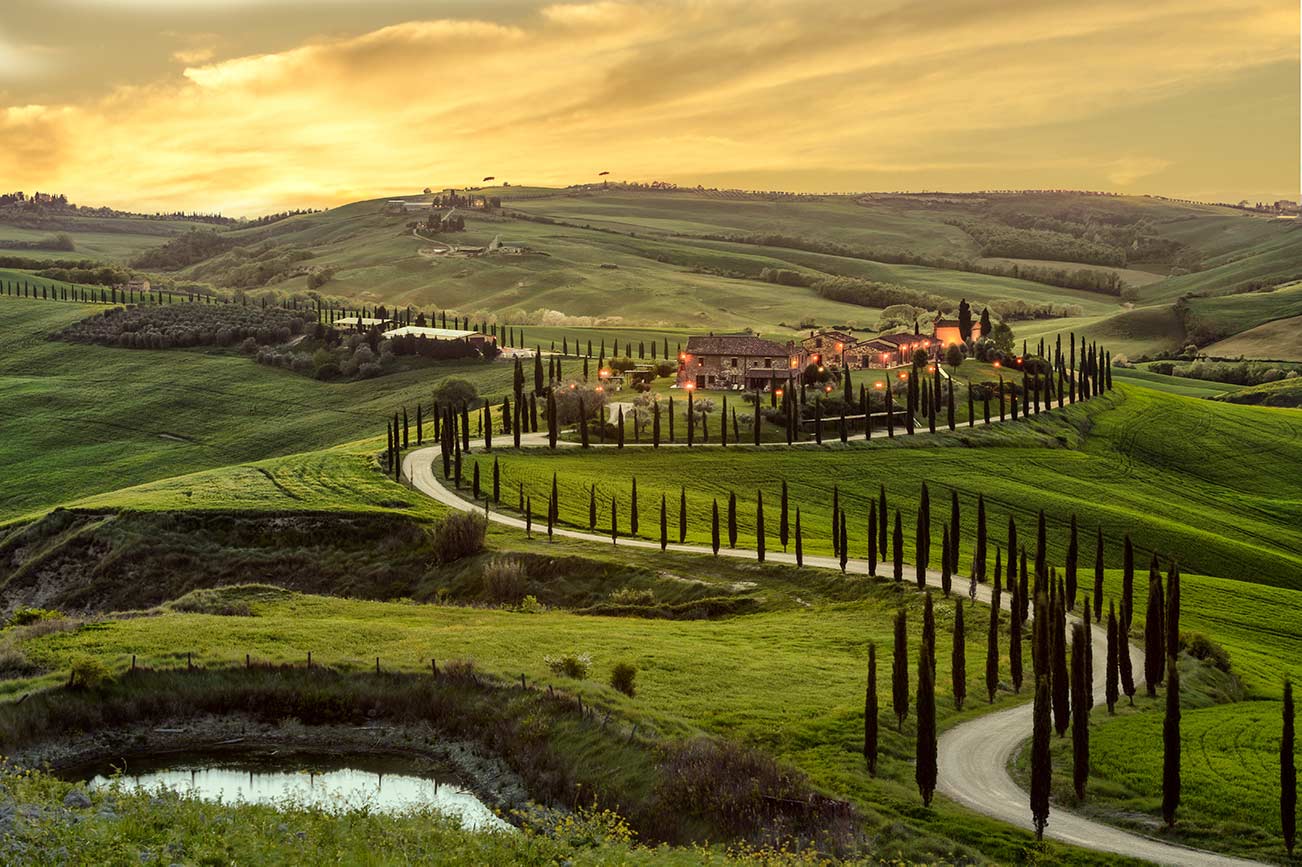
Tuscany, the history of one of the most iconic landscapes in Italy
When we think of Tuscany, our thoughts turn to a green and colourful landscape of hills dotted with medieval villages and fringed with cypresses.
What would Tuscany be if all the cypresses disappeared due to a hateful curse? It would be much, much less than it is. It would be like removing a fundamental ingredient from a refined dish.
Although it is not a plant native to Tuscany, its diffusion in the landscape bears witness to ancient and still alive traditions, linked to its symbolic function and the various forms of use that make it impossible to give up this plant that is deeply linked to the life and work of its people.
The cypress has never grown spontaneously in Italy but comes from ancient Persia, where it was used as an ornamental plant in gardens and villas. It was the Greeks and the Phoenicians who imported it to Italy and the Etruscans continued to plant them throughout the territory of Tuscany. Already in this period, it had an ambivalent symbolic meaning as a plant of life and death. In Persian and Greek cities, cypresses had a symbolic value, a connection with the sky and with the gods perhaps, so much so that the ancient Egyptians used them to build sarcophagi and possibly it was for this reason that the Etruscans and Romans began to connect these plants to the beyond, attributing them a funereal meaning.
The Persians perceived the evocative image of flame and fire and therefore of life and immortality.
The Greeks consecrated it to Pluto, god of the underworld, but they also considered it as symbol of fertility.
The Romans, due to the pure and essential shape of the foliage that is projected towards the sky and because its perfumed resin covered the smell emanating from the mounds, considered it as a funeral tree that conveyed sacredness and gave shade and a sense of peace in places of worship and cemeteries.
Etruscans and Romans also appreciated it as a furniture element of villas, gardens, avenues and monuments. By virtue of its longevity, it was used as a boundary marker between adjacent plots of land. According to the Bible, the Ark of Noah and the cross of Christ were also built with cypress wood. For the Jews first, and for the Christians, later, the cypress was a symbol of eternity. Moreover, this aura of “holiness” accompanied them into the Middle Ages when these elegant, strong plants accompanied life in the monasteries and served as a windbreak barrier, delimiting the sacred space from the secular one.
From the 1400s,noble families resumed planting them in their gardens and properties. Isolated examples or in small groups, located near villas, churches, hostels or crossroads, they served as a reference point for travellers and fixtures and furniture were made from their wood. Since then, the unmistakable, long and tapered silhouettes have been a widespread presence in every corner of Tuscany, characterizing above all the landscapes encountered along the roads that lead from Florence to Siena and as far as the border with Lazio, embracing the Chianti, the Crete Senesi and Val d’Orcia: gently shaped hills similar to dunes, wheat fields where the yellow ochre is broken by rows of cypresses, sinuous vineyards that mingle with sunflowers and emerge from the grey that the dirt paths decorate as if they were a frame.





